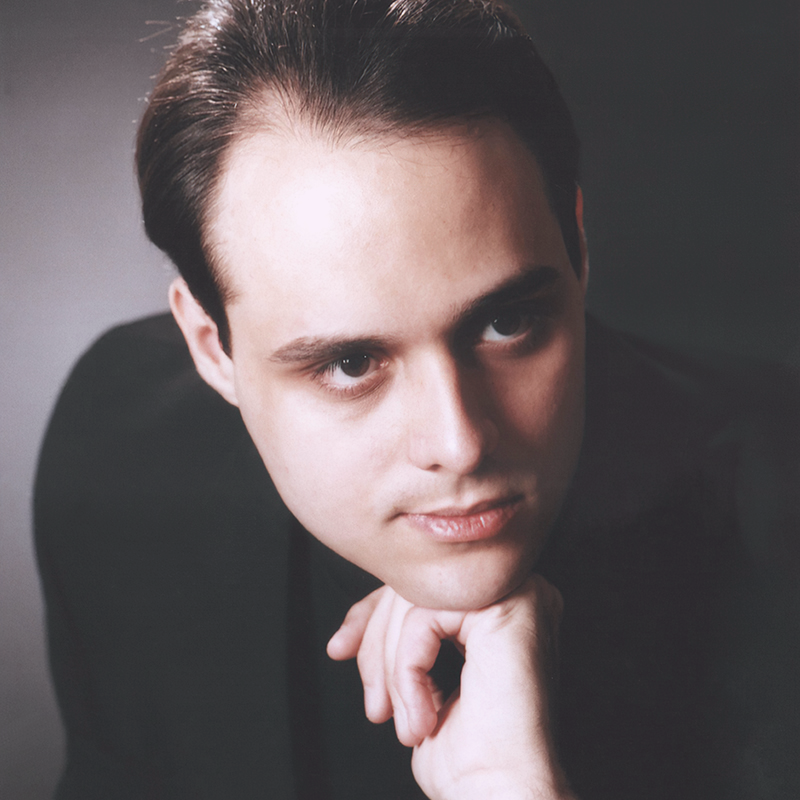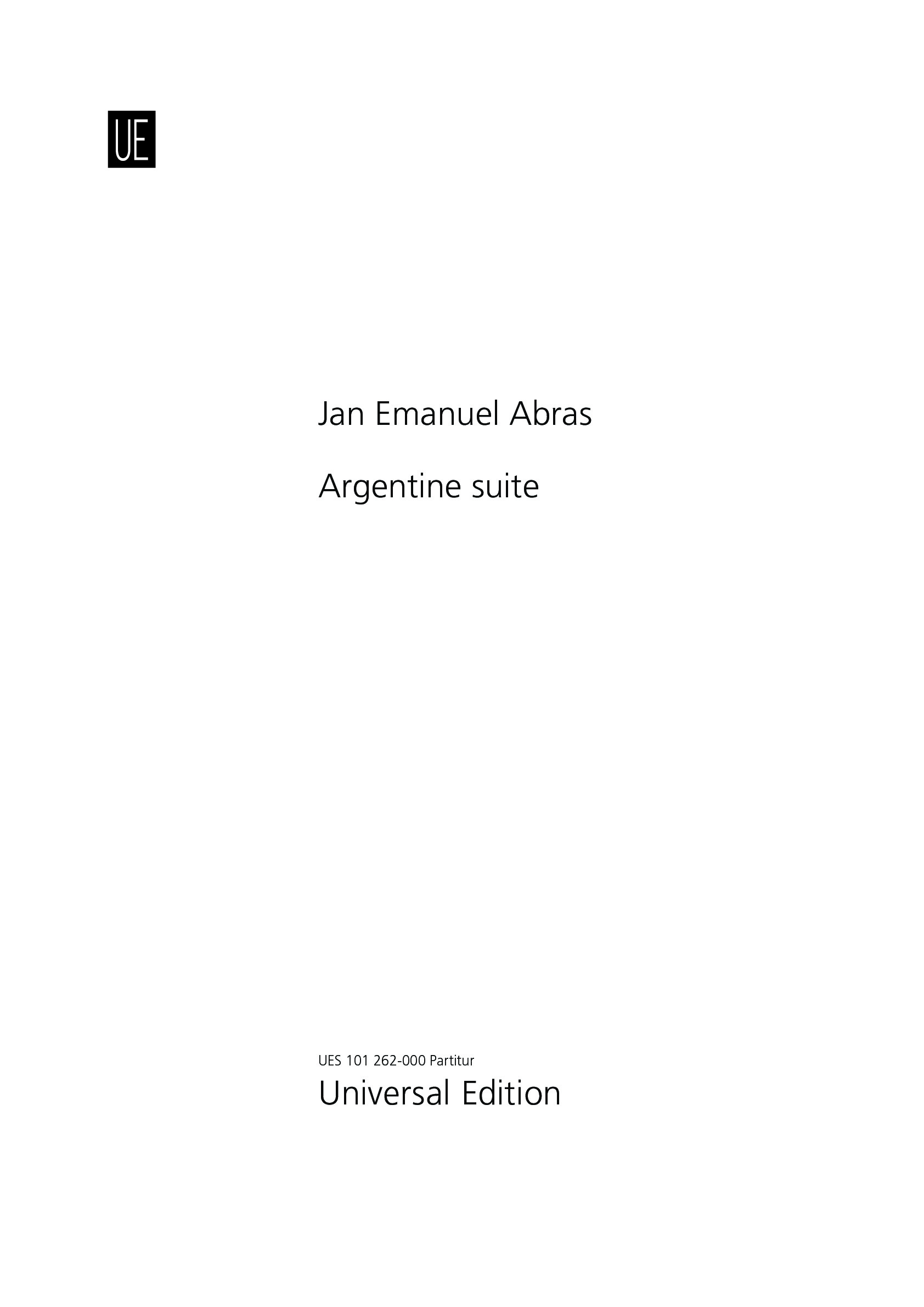

Jan Emanuel Abras
Argentine suite
Short instrumentation: 2 2 2 2 - 4 2 3 1, timp, t.bells, perc(2), cel, str
Duration: 14'
Instrumentation details:
1st flute
2nd flute
1st oboe
2nd oboe
1st clarinet in Bb
2nd clarinet in Bb
1st bassoon
2nd bassoon
1st horn in F
2nd horn in F
3rd horn in F
4th horn in F
1st trumpet in Bb
2nd trumpet in Bb
bass trombone
1st trombone
2nd trombone
tuba
timpani
tubular bells
tam-tam
woodblock
celesta
violin I (12 players)
violin II (10 players)
viola (8 players)
violoncello (6 players)
double bass (4 players)
Argentine suite
Sample pages
Audio preview
Video
Work introduction
Argentine suite (2001) combines elements of Viennese serialism with rhythms of traditional dances and songs from Argentina in a vibrant work for orchestra. In 2001, while studying composition and orchestral conducting at the mdw – University of Music and Performing Arts Vienna, I heard about a competition for composers organized by the Franz Josef Reinl Foundation and decided to take part. As a European composer of classical music, I wanted to combine elements of Viennese serialism, in which I was educated, with the memories of my first trip to Argentina that took place during my adolescence. And to do so, I chose to continue the tradition of incorporating into classical music elements of folk music, which is reflected in works such as Brahms’s Hungarian Dances, Dvorák’s Slavonic Dances, Bartók’s Romanian Folk Dances, Stravinsky’s Suite italienne (linked to his Pulcinella), Kodály’s, Dances of Galánta, Berio’s Folk Songs, etc.
As a starting point, I analyzed the characteristic rhythmic patterns and structures of six Argentine dances and songs: chacarera (a lively couple dance that makes use of syncopation and vertical hemiola), baguala (a slow song accompanied by a frame drum), zamba (a slow couple dance of ternary rhythm), carnavalito (a lively circle dance of binary rhythm), huella (a couple dance of moderate tempo) and malambo (a male dance performed alone or in competition with others). Then, during the compositional process of Argentine suite, I reworked the mentioned rhythmic elements and applied them a pitch organization based on Viennese serialism, creating motivic material. All of this was possible after collecting and studying numerous musical sources (recordings, scores, books, etc.), something I did while keeping in mind my previous knowledge about world dances and songs, which I received since childhood from my mother, a sociologist and classical pianist.
My work Argentine suite was awarded in Vienna the 2nd Reinl Prize 2002 at the Franz Josef Reinl Foundation Composition Contest (version for the chamber orchestra/ensemble/music category). Dedicated to my parents, this piece was premiered in Vienna (Austria), on 7 June 2002, by the Tonkünstler Ensemble under the baton of Werner Hackl at the Fanny-Hensel-Mendelssohn-Saal of the mdw – University of Music and Performing Arts Vienna during the award ceremony of the Reinl Prize. The American premiere of Argentine suite took place in Sacramento (California), on 12 October 2013, with the Camellia Symphony Orchestra conducted by Christian Baldini at the Sacramento City College Performing Arts Center (United States).
Dr. Jan Emanuel Abras, Ph.D. (born 1 February 1975 in Stockholm, Sweden)

